Is Eastern culture really that complicated: can you make a tandoor for shashlik with your own hands?
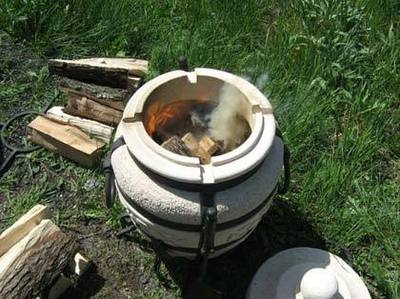
Modern portable tandoor is a device made of fireclay heat-resistant clayThis is its first difference from a barbecue, which is usually made of metal.
Manufacturers of factory tandoors they are insulating them so that the device gives off less heat to the outside.
The second difference is in the shape – while the grill is a steel or cast iron box, the tandoor has the shape of the vase.
The third difference is the position of the meat during roasting: in a grill, the skewers lie on the ribs of the walls or in special grooves. When roasting in a tandoor, the skewers with meat stand verticallyFor this purpose, special holes are drilled in the lid for them.
Content
The process of making a tandoor with your own hands: photo
To make a tandoor yourself, you need to do the following.
Laying the foundation
What happens is this:
- The fertile soil layer is removed to a depth of approximately 40-60 cm.
- The clay part of the soil is replaced frost-resistant material, as a rule, crushed stone.
- To prevent soil and crushed stone from mixing, they are separated special geotextile material.
- The crushed stone is compacted using vibratory plates or manually.
- It's pouring cement.
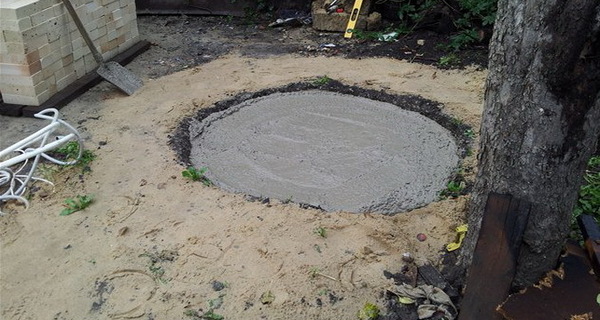
Photo 1. At the end of the work on laying the foundation of the tandoor, its area is filled with cement.
Inner chamber
Construction of the inner chamber:
- It is attached to the center of the foundation frame, rotating around a vertical axis.
- Under constant control, the frame is laid out wall, the bricks are placed on edge.
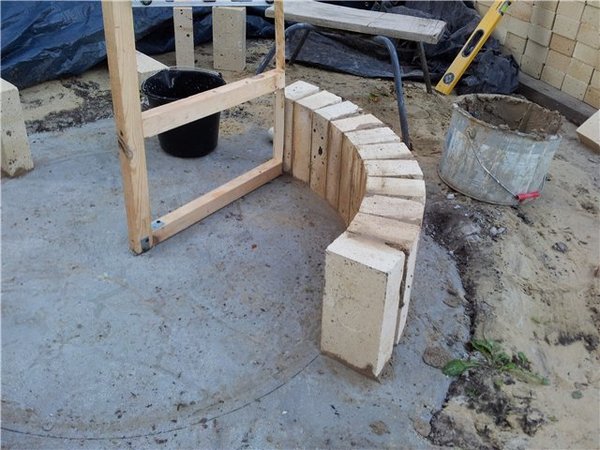
Photo 2. The base of the tandoor is erected using a special frame: bricks are installed in a circle with the edge facing down.
- The first row is not laid completely, several bricks are skipped to install the door ash pan.
- Between the first and second rows is installed grate.
Pug
Coating the structure with clay:
- The solution is applied in small portions to the inner surface and then smoothed out. up to a thickness of 1-2 cm.
- The outer side is also coated using plastering and reinforcement. solution.
- With the help of ladle or trowel the solution is applied.
- In fifteen minutes it is pressed into it evenly wire mesh.
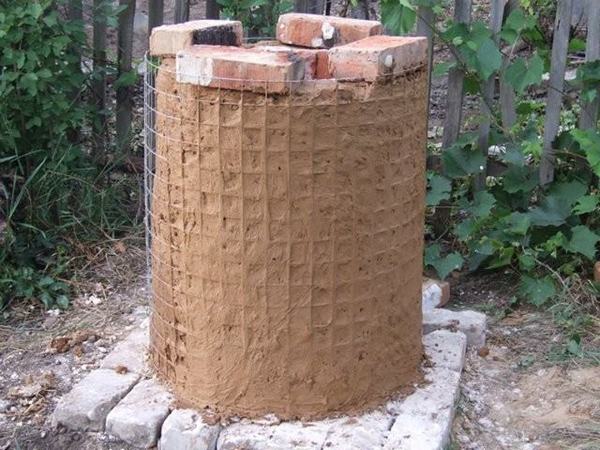
Photo 3. The tandoor with the first layer of mortar applied is wrapped with wire mesh, which is pressed in slightly.
- Upper part of the mesh is cut off or bends until the desired shape is obtained.
- A coating is applied over the mesh base layer of clay.
- Manually the final layer of clay is applied.
- The structure is left for 3-12 days until completely dry.
Then comes the process of creation accumulating heat capacity - at a distance a few centimeters A pedestal with a portal is mounted from the masonry, then the gap is filled with heat-insulating material.
Clay constantly gets burned - so that the inner coating burns, tandoor within two days regularly heated. The outer coating is done only after the inner one has been fired.
The roof has only one function - to protect the stove. from precipitation. Therefore, it should not have holes through which water can get inside and not interfere with placing food for cooking and taking it out. Therefore, for support, four metal posts. The shape, size and finish of the roof remain entirely up to the owner's taste.
Important! During the firing of the internal coating, the oven must be heated slowly, gradually increasing the temperature inside, otherwise the coating may crack.
Problems of using a brick oven
As a rule, the main problem when using a tandoor is that it cools down quickly. There may be several reasons, which means there are also several solutions.
The firewood was selected incorrectly
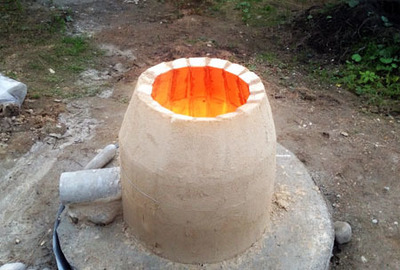
In this case, the main reason is coniferous firewood.
Burning resin quickly raises the temperature, however, the coals of coniferous trees are not able to give off heat for a long time and cool down quite quickly. This can be avoided by using firewood made of beech, acacia or oak.
They don't burn as hot as spruce or pine, but the coals remain hot longer, which maintains the heat in the oven.
Poorly closed lid or open ash pit
These reasons are combined into one point, as they have similar reasons for cooling - gaps in the thermal insulation. Here the solution may be a tightly closing, well-fitting lid and a closed ash pit. This will prevent heat loss and allow the tandoor to stay hot longer.
Reference! Heat can also escape through gaps in the coating. This is caused by a violation firing mode or poor coating, cooling the oven with water or violating the temperature regime, for example, intensive heating of the tandoor in severe frost.
Lack of heat deflector
In the tandoor, the role of the heat deflector is played by special fireclay insert. More often than not, purchased products suffer from this problem.
Poor or no thermal insulation
It's all about the absence "thermos effect"Clay itself is a poor heat insulator, so you can cook on a tandoor without an insulating layer. only in summer. And the presence of a layer of expanded clay or other insulation allows you to extend the outdoor cooking season.
Useful video
Watch the video, which tells about the main stages of building a tandoor.
Safety rules for using a tandoor for barbecue
Precautions when working:
- Gradually Raise the temperature when using for the first time.
- Cannot be used water to cool the hot tandoor - this can cause it to become unusable.
- Use caution when cooking into the wind — the flame can rise to a height of up to a meter.
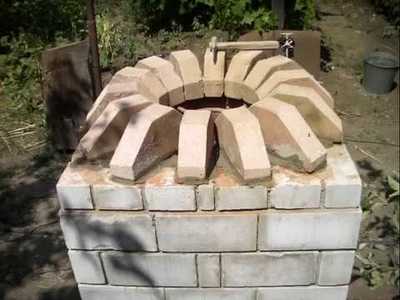
- Take care from precipitation.
- Dry raw tandoor slow warming up by gradually increasing the temperature.
- In severe frosts warm up smoothly, avoiding sudden changes in temperature.
- Don't let anyone in children to the working structure - the temperature of the walls can reach four hundred degrees, and touching them can cause severe burns.
- Do not light the tandoor in closed spaces.
- Do not allow nearby presence flammable liquids and objects (for example, oily rags and fuels and lubricants).
- Let the tandoor cool down on one's own.






Comments